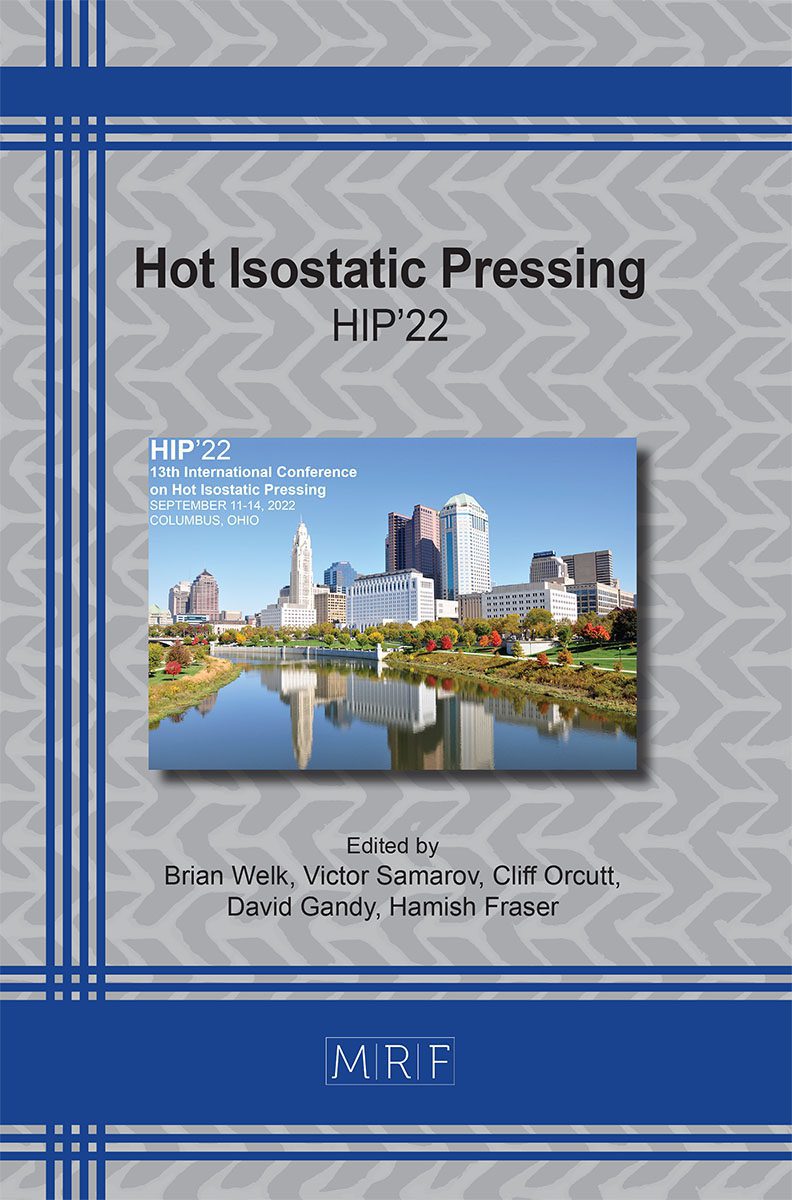Dissolvable HIP Space-Holders Enabling more Cost Effective and Sustainable Manufacture of Hydrogen Electrolyzers
Iain Berment-Parr, Owen Larkin, Bea Howarth, Kieran Bullivant
download PDFAbstract. Polymer Electrolyte Membrane (PEM) electrolyzers are a key to the future of global hydrogen production. However, current systems rely on titanium components manufactured through energy and resource intensive processes which make up a large proportion of the overall capital cost of an electrolyzer stack. In this work circular economy principles have been applied to investigate net shape powder manufacturing routes for these titanium plate and porous film components. Approaches include (1) direct HIP of waste stream materials such as un-melted titanium sponge fines or subtractive machining swarf (2) net shape manufacturing of complex geometries using innovative dissolvable salt space holding inserts (3) in-situ nitriding methods (4) streamlining a large number of processing stages within the existing supply chain. In order to assess the environmental impact of the proposed manufacturing routes an embodied carbon analysis was conducted comparing the emissions potentially generated via this powder process versus the traditional supply chain.
Keywords
Powder Hot Isostatic Pressing, Shape Holding Insert, Porous Structure, Titanium, Salt, Sodium Chloride, Sodium Aluminate, Hydrogen, Electrolyzer, Fuel Cell
Published online 12/8/2023, 7 pages
Copyright © 2023 by the author(s)
Published under license by Materials Research Forum LLC., Millersville PA, USA
Citation: Iain Berment-Parr, Owen Larkin, Bea Howarth, Kieran Bullivant, Dissolvable HIP Space-Holders Enabling more Cost Effective and Sustainable Manufacture of Hydrogen Electrolyzers, Materials Research Proceedings, Vol. 38, pp 22-28, 2023
DOI: https://doi.org/10.21741/9781644902837-4
The article was published as article 4 of the book Hot Isostatic Pressing
![]() Content from this work may be used under the terms of the Creative Commons Attribution 3.0 license. Any further distribution of this work must maintain attribution to the author(s) and the title of the work, journal citation and DOI.
Content from this work may be used under the terms of the Creative Commons Attribution 3.0 license. Any further distribution of this work must maintain attribution to the author(s) and the title of the work, journal citation and DOI.
References
[1] B. Pivovar, Low Temperature Electrolyzer Technology, Electrolysis Panel Session Presentation at the U.S. Department of Energy (DOE) Hydrogen Shot Summit, August 31-September 1, 2021.
[2] E. Taibi et al, International Renewable Energy Agency, Green Hydrogen Cost Reduction – Scaling up Electrolysers to Meet the 1.5⁰C Climate Goal (2020): Published online at www.irena.org/publications.
[3] Ole Edvard Kongstein et al, Alternative Energies and Atomic Energy Commission (CEA), NEXPEL Project WP5 “Porous current collectors and materials for bipolar plate” bibliographic review, 2010.
[4] Luca Bertuccioli et al, E4tech Sàrl and Element Energy, Study on development of water electrolysis in the EU, Approved for publication by the Fuel Cells and Hydrogen Joint Undertaking, 2014.
[5] P.L. Pratt and R.P. Harrison, Dislocation Mobility in Ionic Crystals, Discussions of The Faraday Society No. 38, Aberdeen University Press, page 211-217, 1964. https://doi.org/10.1039/df9643800211
[6] S. Lascano et al, Porous Titanium for Biomedical Applications: Evaluation of the Conventional Powder Metallurgy Frontier and Space-Holder Technique, Journal of Applied Sciences, 9, 982, 2019. https://doi.org/10.3390/app9050982
[7] B Ye and D. C. Dunand, Titanium foams produced by solid-state replication of NaCl powders, Materials Science and Engineering A, issue 528, page 691-697, 2010. https://doi.org/10.1016/j.msea.2010.09.054
[8] B.K Lograsso et al, Densification of titanium powder during hot isostatic pressing, Metallurgical Transactions A, Volume 19A, 1767-1773, 1988. https://doi.org/10.1007/BF02645145
[9] U.M. Attia, HIPing of Pd-doped titanium components: A study of mechanical and corrosion properties, Proceedings of the 11th International Conference of Hot Isostatic Pressing, 2014.
[10] Full source references for the reported embodied carbon analysis are available upon request.































